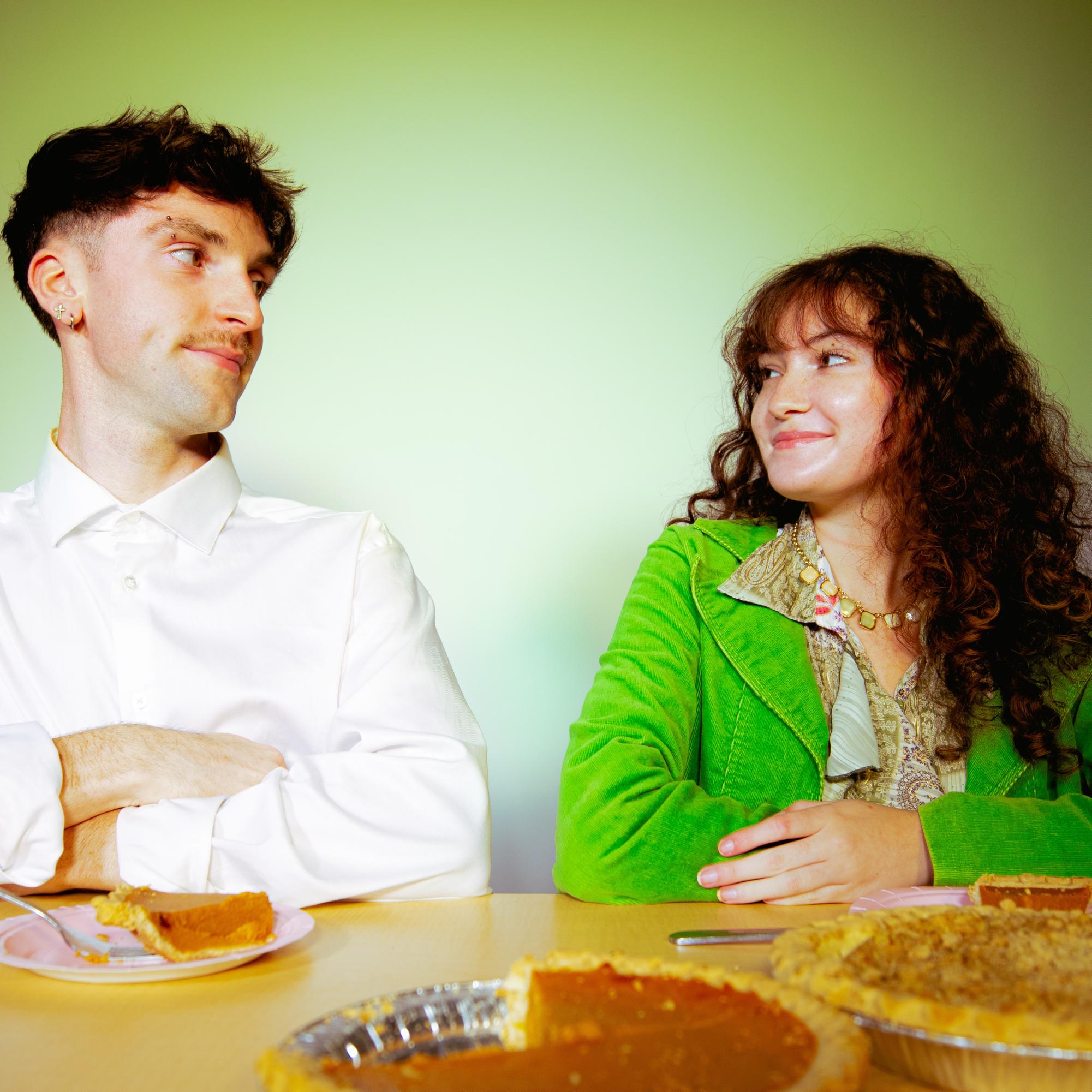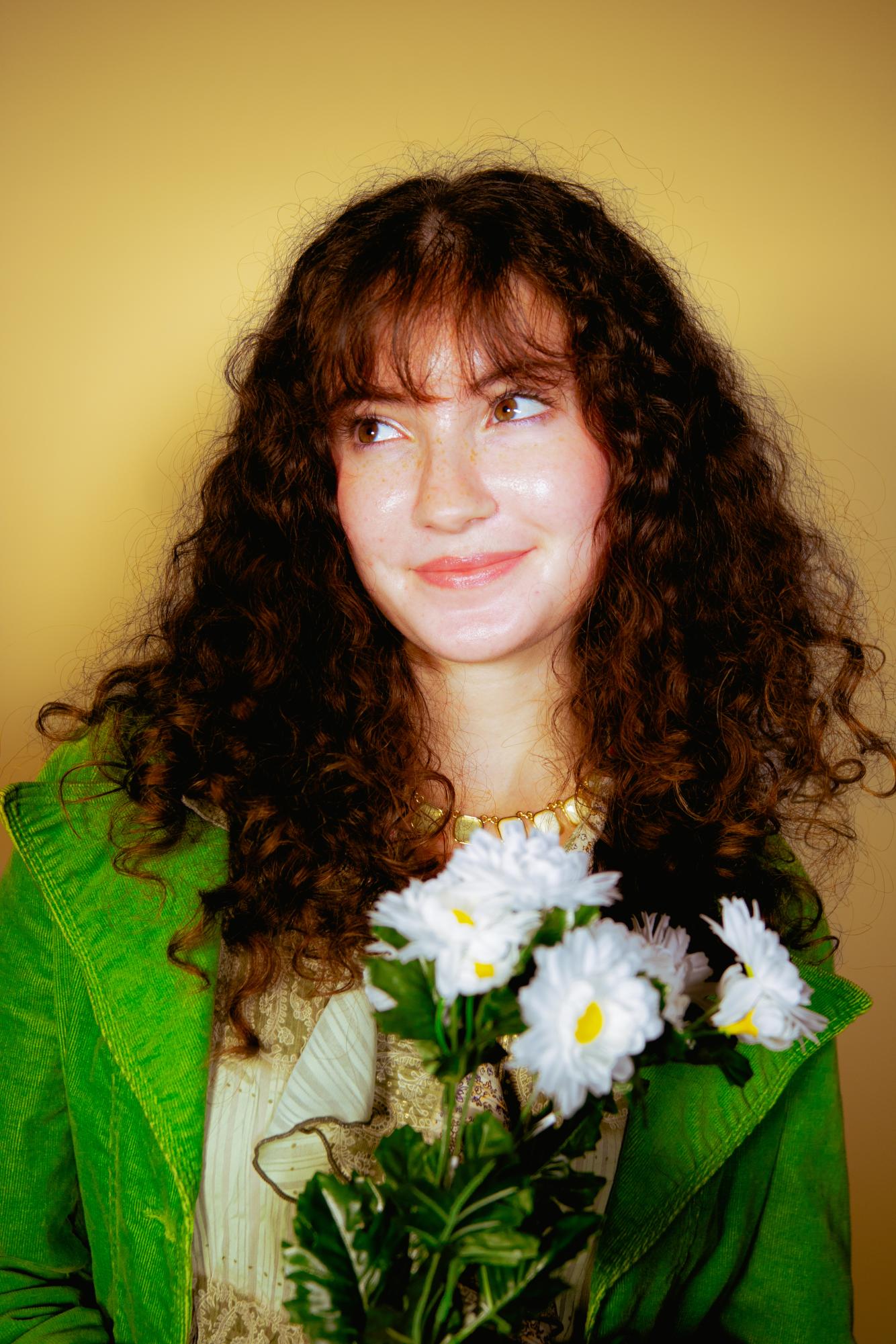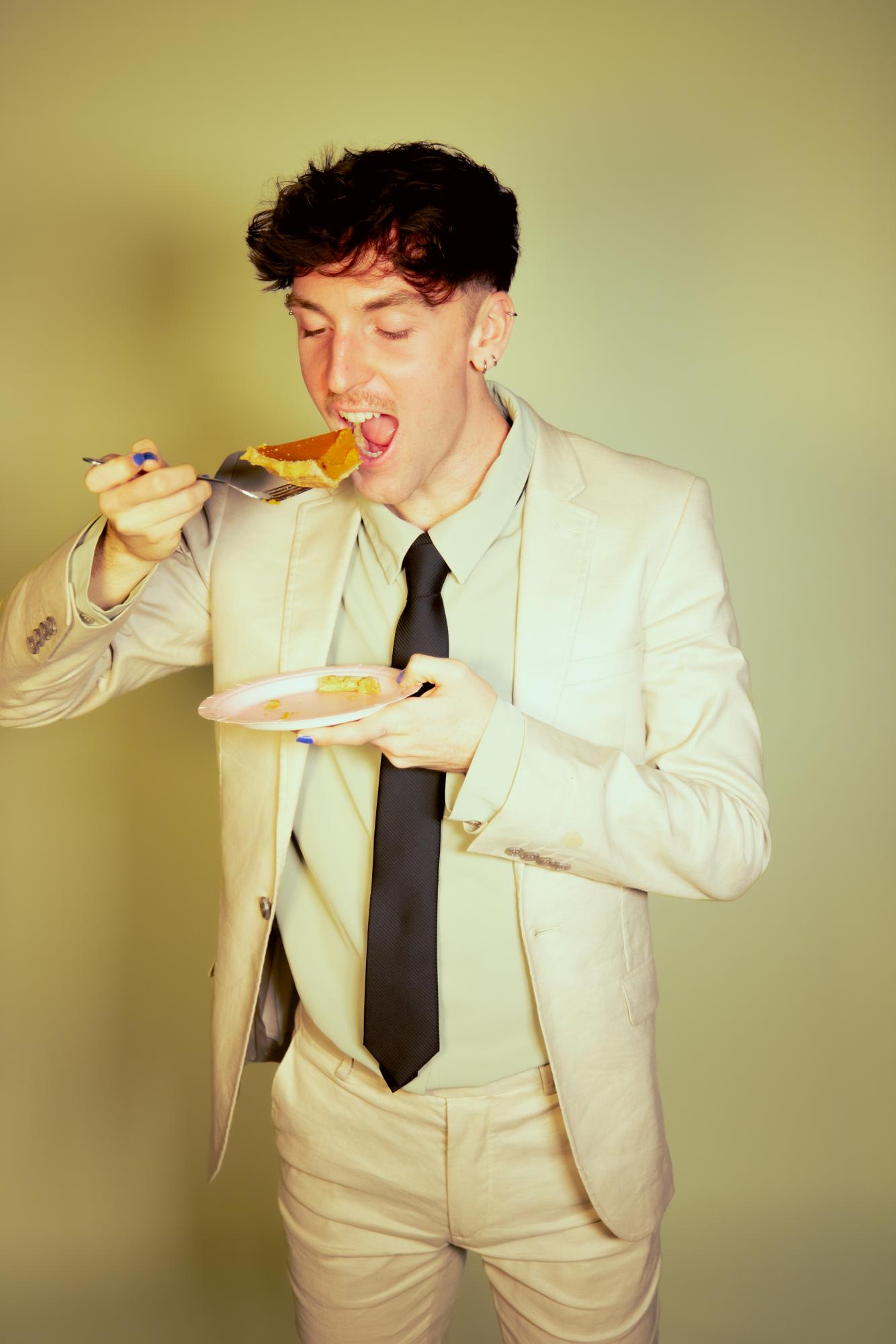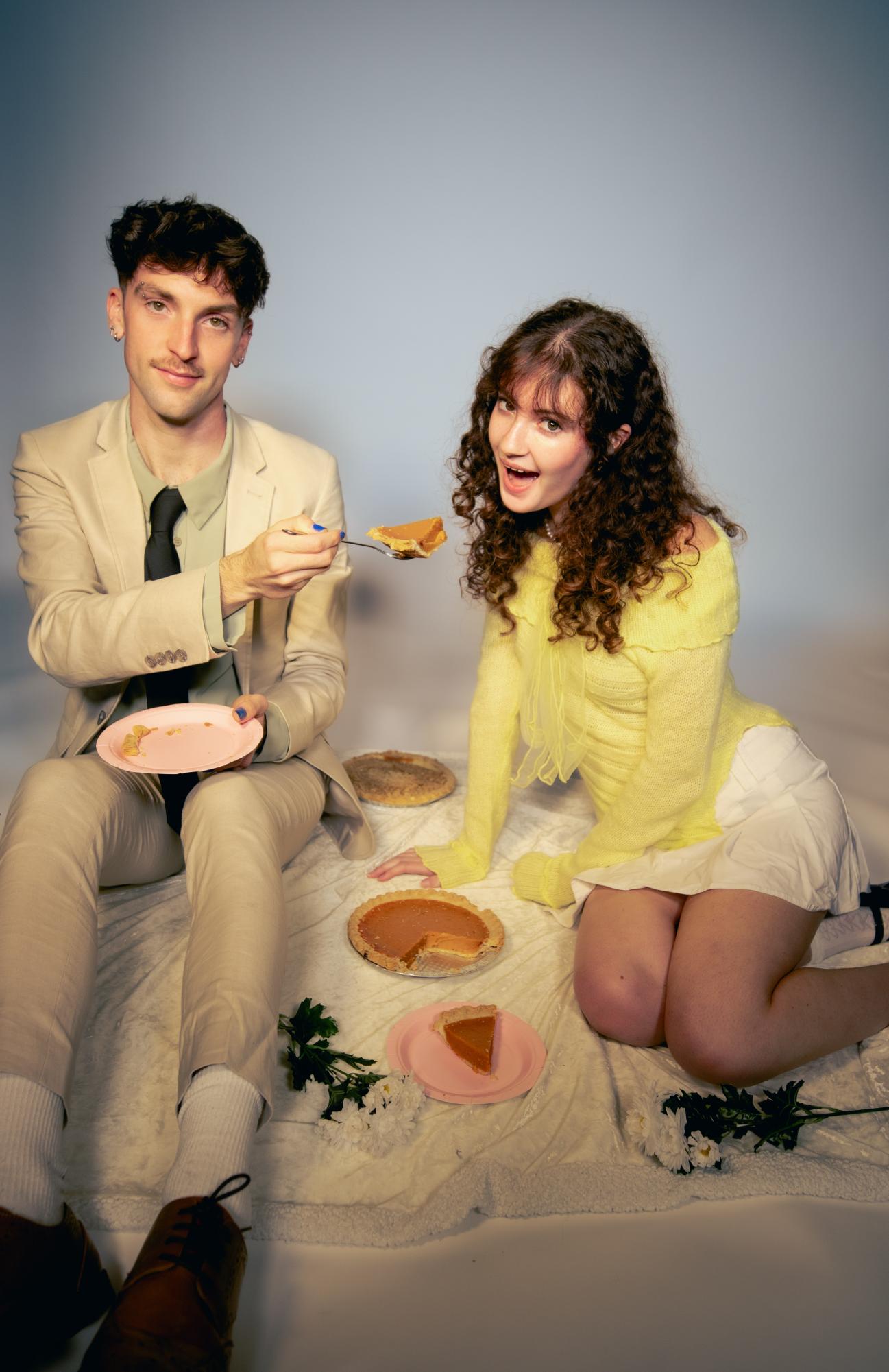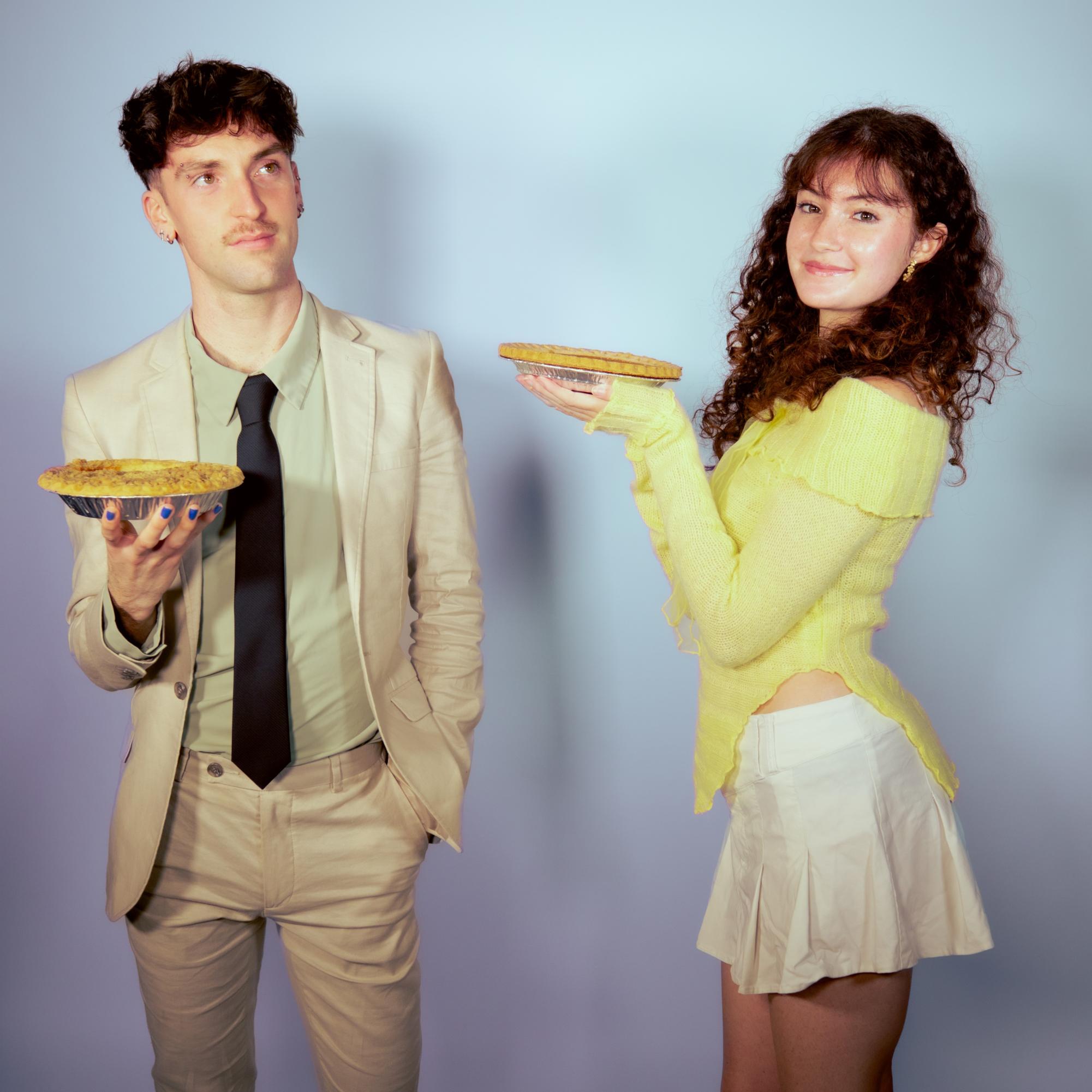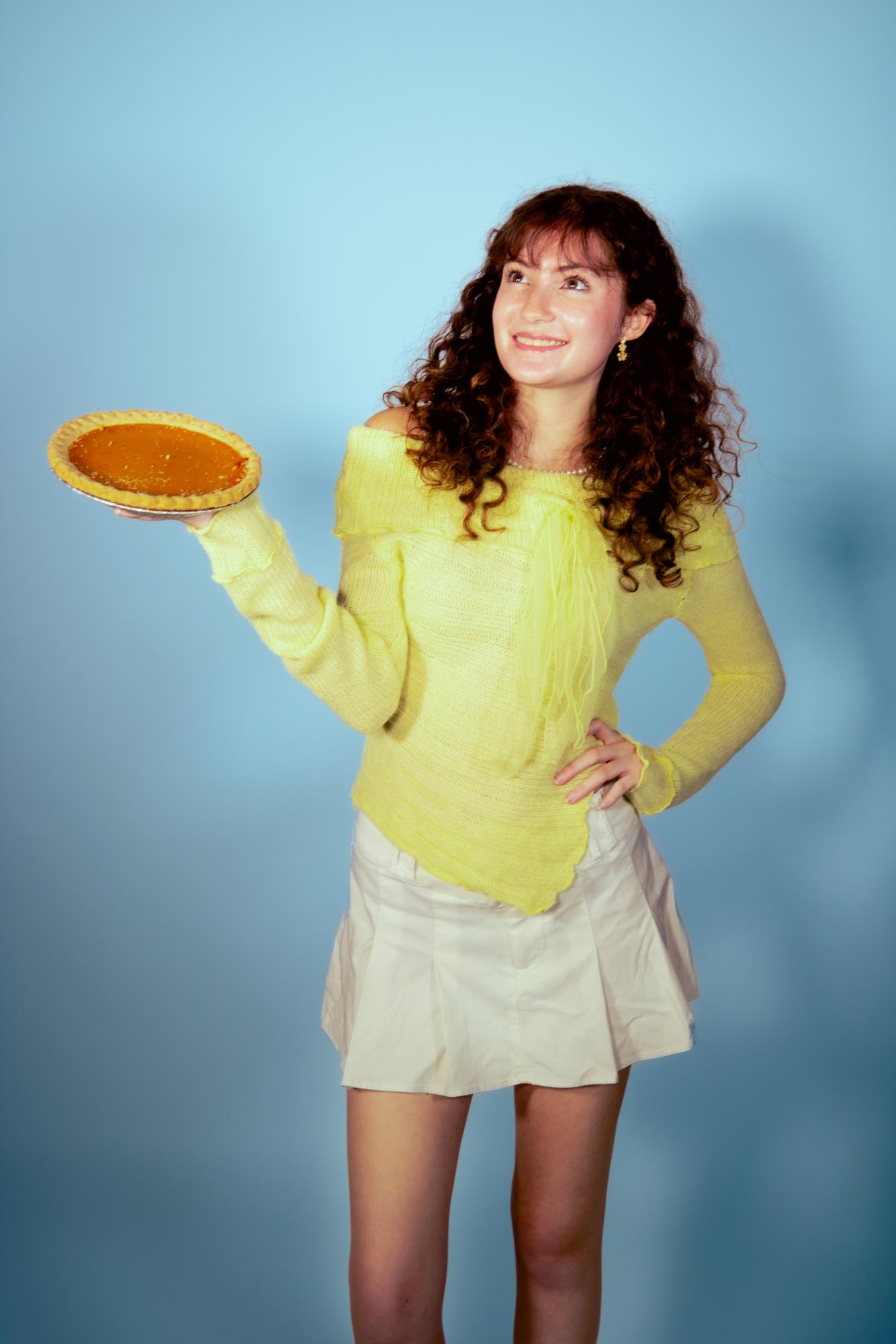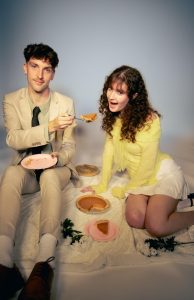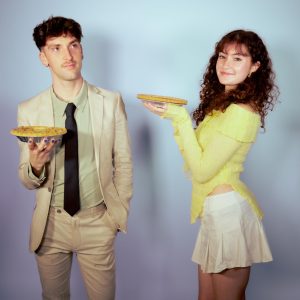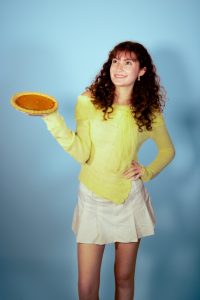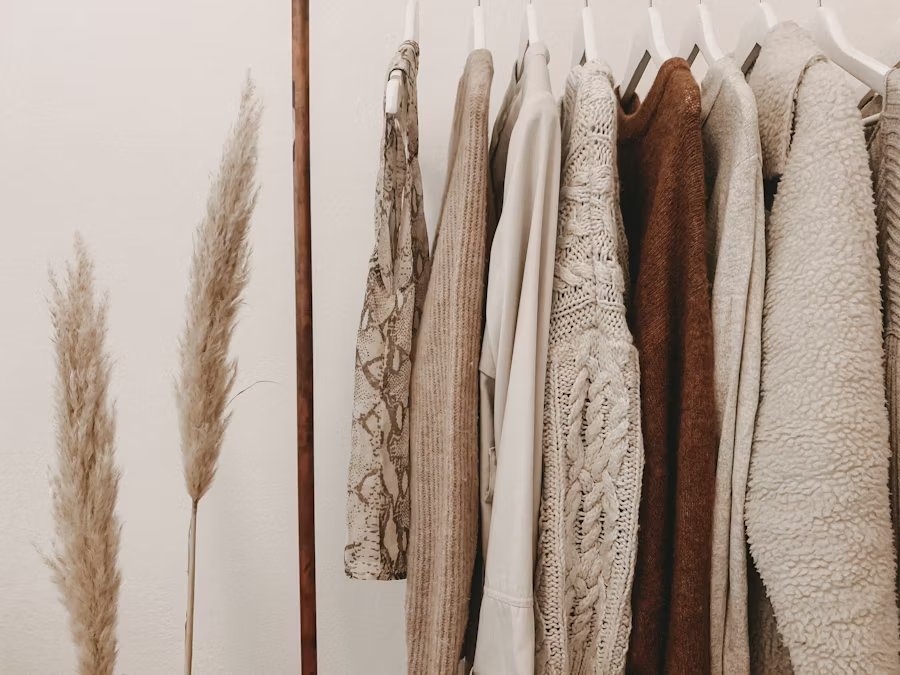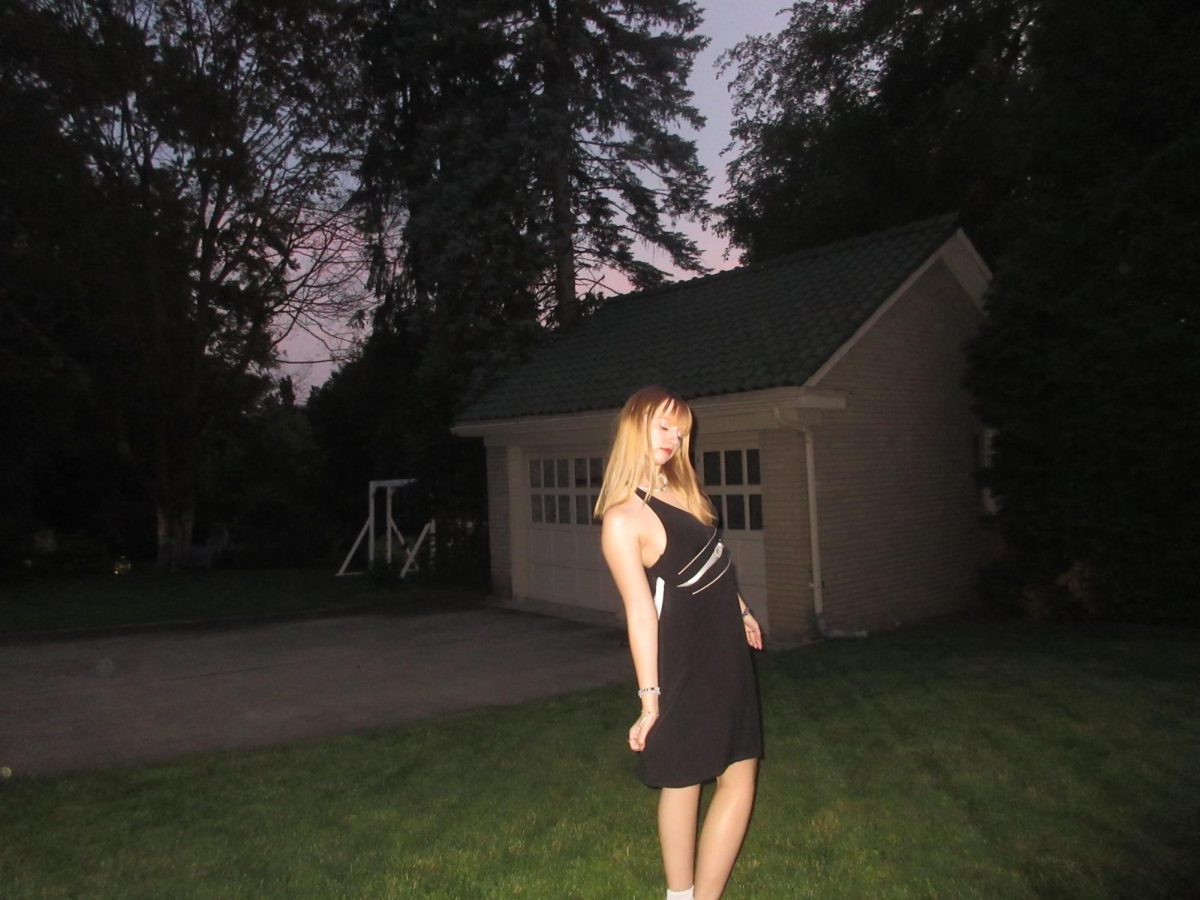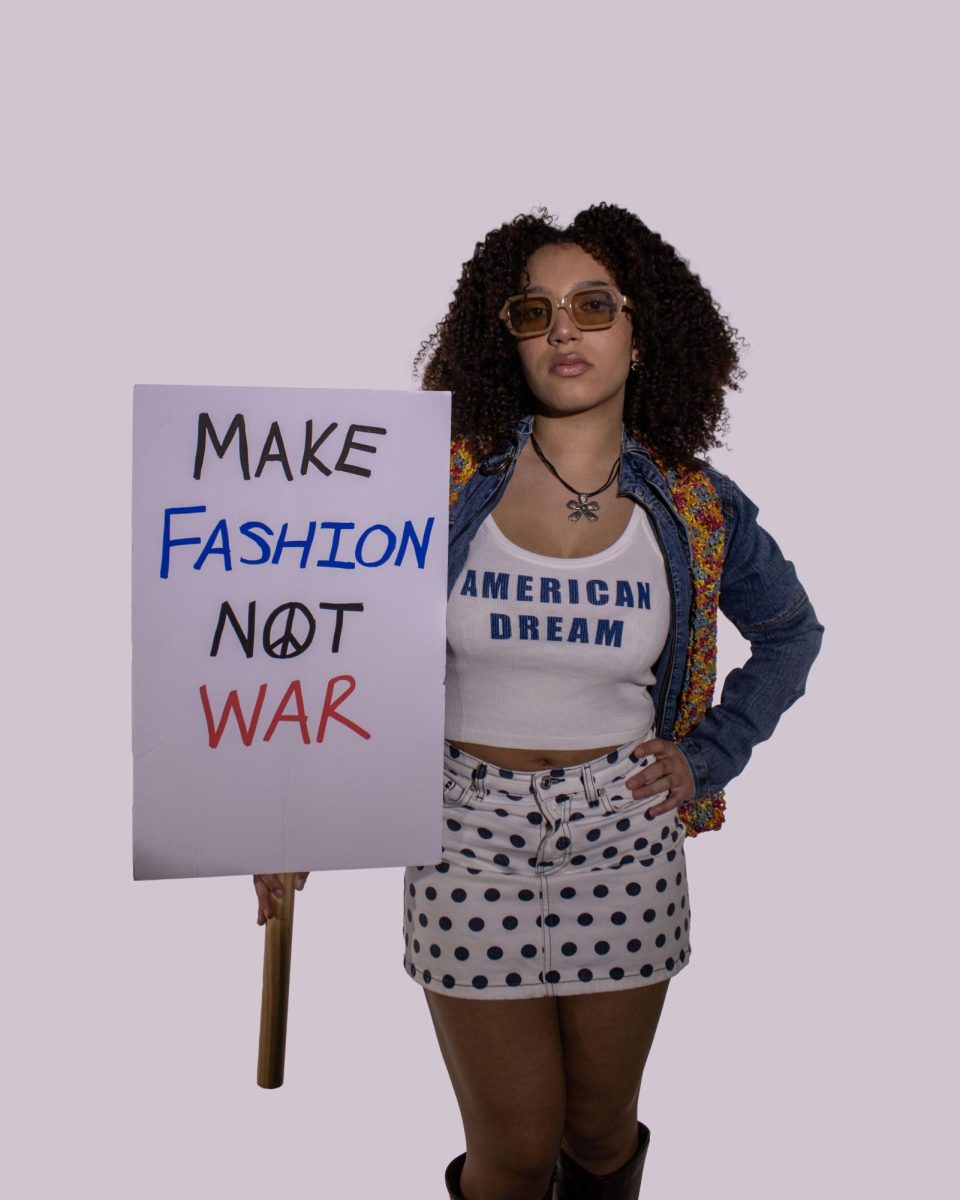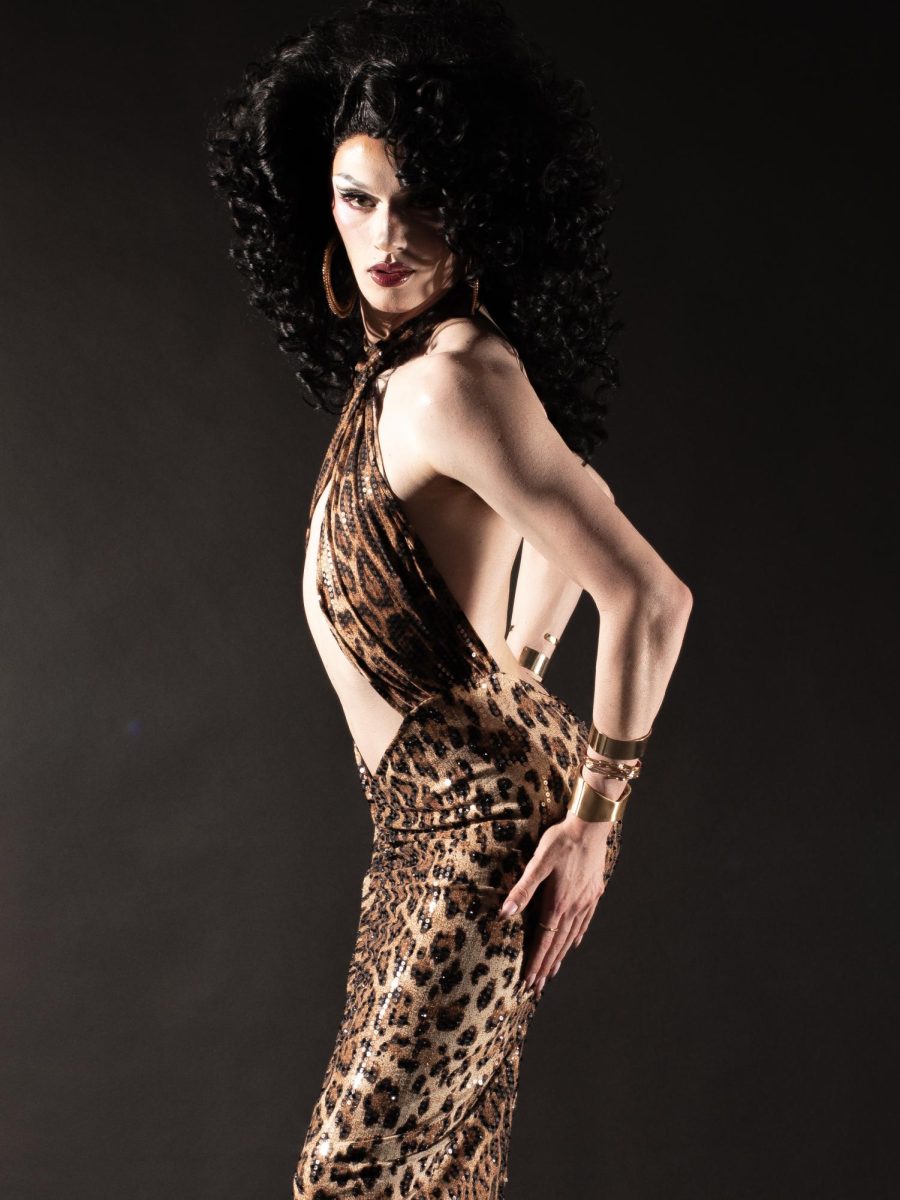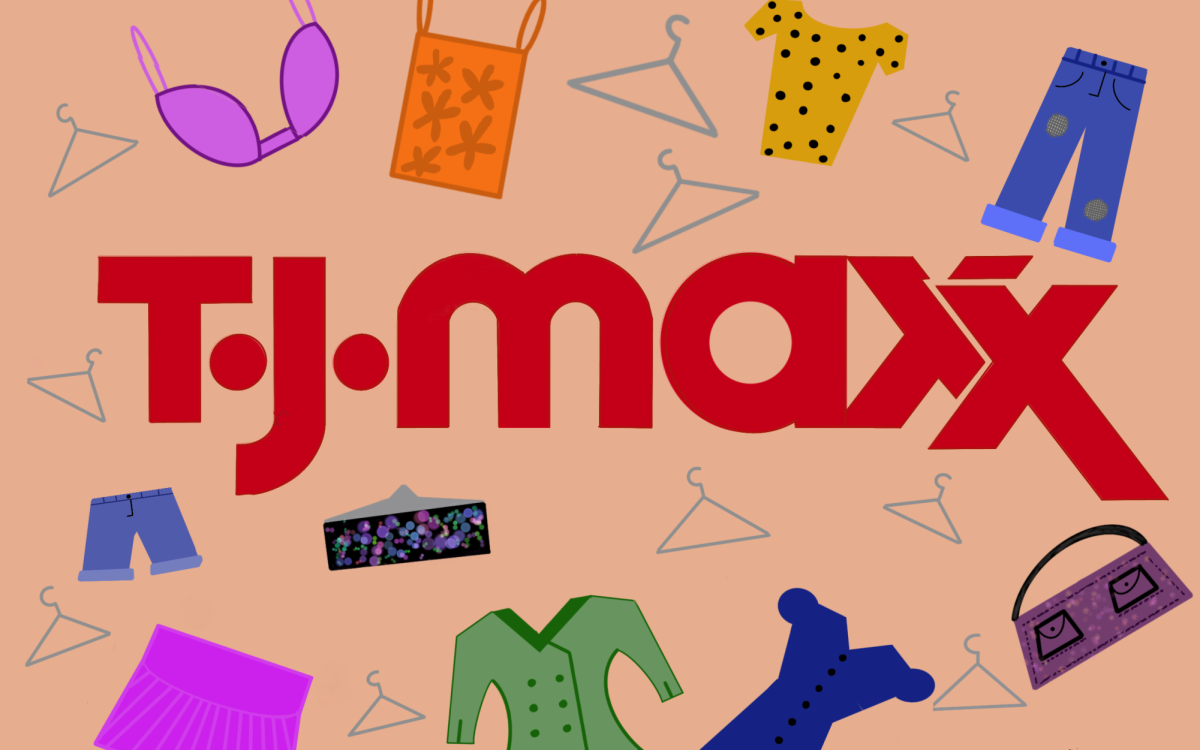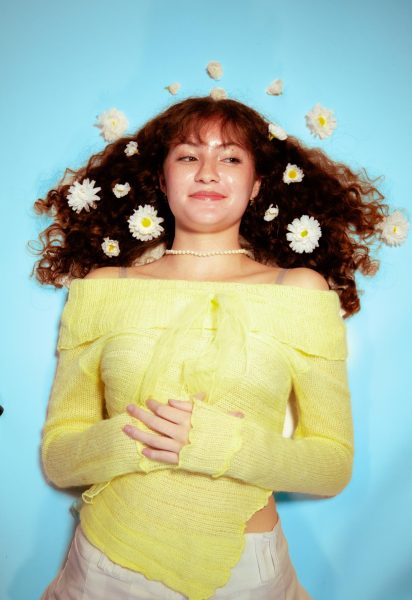
Models: Eva Elisa Wells and Dylan McBride
Stylists: TyNaya McNeal and Isabelle Buccelli
If you were to be “pushing up daisies” but had a chance to come back to life, how would the world look? Would it be saturated with bright colors like honey yellows? Would everyone dress like they were living in a past decade with A-line dresses, or would it be dark and gloomy?
Bryan Fuller’s short-lived television show “Pushing Daisies” explored the idea of life after well… life. The show follows Ned, who can revive the dead with one touch. When Ned hears about the death of his childhood sweetheart, Charlotte “Chuck” Charles, he chooses to use his gift for his benefit. Together, Ned and Chuck utilize Ned’s gift to raise the dead by investigating murder mysteries.
Rather than leaning into dark and gloomy tones like other zombie-focused shows, for example, “IZombie” or “The Walking Dead,” the show’s costume designer Robert Blackman chose to lean into a more colorful, saturated tone.
Blackman joined the series shortly after the pilot, inheriting a strict style guide created by the show’s executive producer Barry Sonnenfield.
This guide required Ned’s wardrobe to be void of colors and the avoidance of the color blue because it was Sonnenfield’s least favorite color.
Although the rule about the color blue seems odd, the color has been associated with sadness. To avoid any sad connotation, the color yellow is used frequently within the series—for example, Chuck possesses a fascination with bees and beekeeping.
Her hobby influenced the show’s season two premiere with its focus on a “buzz-worthy” murder. Blackman donned the cast in different hues of gold and yellow and incorporated hexagonal patterns to evoke the image of beehives and utilized floral prints.
With the show’s new season and eagerness to create change to the plot by allowing Chuck to have more freedom outside of Ned, having an episode focused on her hobby only made sense. In the episode, and for the remainder of the season, Chuck becomes a bee, learning to fly beyond the confines of her hive.
Chuck’s style, like other characters, often incorporates multiple decades as inspiration. Her clothing draws from the ‘40s, ‘50s, ‘60s, early ‘70s, ‘90s and present day, which at the time would have been around 2007. She often becomes a fashion chameleon.
However, after finding out her mother was actually her aunt Lily in the episode “Frescorts,” she takes inspiration from Lily’s style by wearing pink. Lily’s color of choice is red and she is often seen in tight-fitting clothes.
The choice to have Chuck mirror Lily’s style was meant to show her eagerness to connect with her mother.
By having Chuck’s outfits reflect her inward state, it directly contrasts the lack of color Ned incorporates into his style.
“That way, you never lose sight of him, no matter how bright the other clothes are,” Blackman said in a New York Times article.
Although this functioned as a great way for Ned to always catch the viewer’s eye, Ned’s lack of colors compared to the other characters also displayed his lack of belonging.
Throughout the series, an unfortunate event from Ned’s childhood is highlighted at the start of an episode. An example of this would be a young Ned seeing his father’s new family celebrate Halloween at the start of “Girth.”
Ned feels alienated from others because of his gift and lack of family, and this alienation is shown through his wardrobe, which is, in turn, alienated from others’ wardrobe with its lack of color.
Even though television shows do not have the same expectations to provide characters’ feelings and motivations as movies, “Pushing Daisies” proves TV shows can provide characters depth through fashion.
Most importantly, “Pushing Daisies” shows TV shows can have fun with their characters’ fashions while also moving the story along.
Support Student Media
Hi! I’m Kayla Friedman, A Magazine’s editor-in-chief. My staff and I are committed to bringing you the most important and entertaining news from the realms of fashion, beauty and culture. We are full-time students and hard-working journalists. While we get support from the student media fee and earned revenue such as advertising, both of those continue to decline. Your generous gift of any amount will help enhance our student experience as we grow into working professionals. Please go here to donate to A Magazine.

